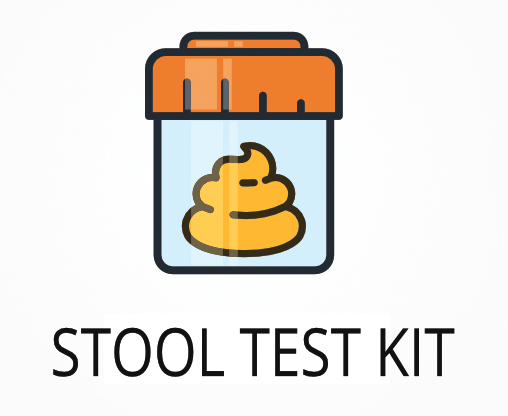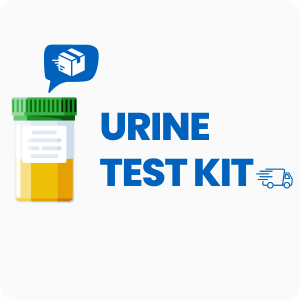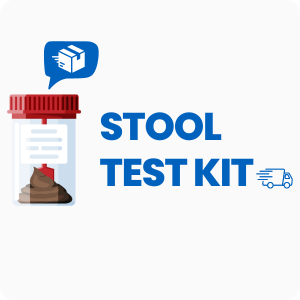Ordering the Comprehensive Digestive Stool Test 2.0 | Europe
Ordering the Comprehensive Digestive Stool Test 2.0 helps identify specific digestive imbalances, including bacteria, yeast, and parasites, that may be affecting your gut. Interestingly, this test can also reveal how well your body is breaking down and absorbing nutrients, which is often overlooked in routine checkups.
When ordering this test, you gain access to detailed information about your digestive system:
- Pinpoints imbalances in beneficial and harmful gut bacteria
- Detects hidden yeast or fungal overgrowth, such as Candida
- Identifies markers of inflammation and immune response in the gut
- Assesses digestive enzyme function and nutrient absorption
- Reveals the presence of parasites or other pathogens
Who Should Consider Digestive Microbiome and Stool Analysis
People who experience ongoing bloating, gas, or changes in stool consistency after eating may benefit from this test, especially if these symptoms have not improved with dietary changes. For example, someone who feels tired and foggy after meals, despite eating a balanced diet, could discover underlying gut issues that standard tests miss.
Ordering this test may also be helpful in these situations:
- Frequent constipation or diarrhea that does not respond to common remedies
- Unexplained skin issues, such as rashes or acne, that seem linked to digestion
- Sudden changes in weight without a clear reason
- Recurring food intolerances or sensitivities
- Unexpected mood swings or low energy that coincide with digestive discomfort
Testing can help identify the root cause of symptoms like bloating, cramps, or fatigue by measuring specific markers in your stool, such as calprotectin and beneficial bacteria. Delaying this test may allow gut imbalances to persist, making it harder to address symptoms and restore normal digestion.
How to Prepare for Digestive Function and Microbiome Testing
Fasting is not required for this stool test, so you can eat and drink as usual before collecting your sample. Always follow the instructions provided by your doctor or healthcare practitioner to make sure your sample is collected and shipped correctly.
Labs Included When Ordering Your Comprehensive Digestive Stool Test 2.0
| Test Name | Reference Range | What This Marker Means | Low and High Levels of Comprehensive Digestive Stool Test 2.0 |
|---|---|---|---|
| Beneficial flora (Bifidobacterium, E. coli, Lactobacillus) | 106–108 CFU/g | These bacteria help digest food, produce vitamins, and protect against harmful microbes. Healthy levels support regular bowel movements and a balanced immune response. |
High levels mean there may be an overgrowth, sometimes from probiotics or diet changes.
Low levels mean reduced protection against harmful bacteria and possible digestive issues. |
| Imbalanced and dysbiotic flora | Not detected | Shows if there are too many harmful bacteria or not enough good ones. This can affect digestion, mood, and immune function. |
High levels mean an overgrowth of harmful bacteria, which can cause bloating or discomfort.
Low levels mean a balanced gut, which is ideal. |
| Bacteriology EIA (Campylobacter, E. coli) | Not detected | Detects specific bacteria that can cause infections or digestive upset. Useful for finding hidden causes of diarrhea or cramps. |
High levels mean a possible infection or overgrowth of harmful bacteria.
Low levels mean no infection detected. |
| Shiga-like Toxin | Not detected | Checks for toxins made by certain E. coli strains that can cause severe digestive symptoms. Important for unexplained diarrhea or pain. |
High levels mean exposure to harmful bacteria producing toxins.
Low levels mean no toxin detected. |
| Mycology Elastase 1 | >200 μg/g | Measures pancreatic enzyme output, showing how well your pancreas helps digest food. Low levels can mean trouble breaking down fats and proteins. |
High levels mean rare, but may indicate rapid transit or sample contamination.
Low levels mean possible pancreatic insufficiency and poor digestion. |
| Pancreatic SCFA | 50–150 μmol/g | Short-chain fatty acids (SCFA) are made by gut bacteria and help keep the colon healthy. They also support energy for colon cells. |
High levels mean increased fermentation, often from high fiber intake.
Low levels mean less bacterial activity and possible gut imbalance. |
| Putrefactive X | Not detected | Indicates protein breakdown by gut bacteria. High levels can mean too much protein fermentation, which may irritate the gut lining. |
High levels mean excess protein breakdown, possibly from high meat diets.
Low levels mean normal protein digestion. |
| Eosinophil Protein | <2.0 mg/L | Shows if there is inflammation from allergies or parasites in the gut. Useful for unexplained digestive symptoms or skin issues. |
High levels mean possible allergic reaction or parasite infection.
Low levels mean no sign of allergic or parasitic inflammation. |
| Calprotectin | <50 μg/g | A marker for gut inflammation. High levels can point to inflammatory bowel conditions or ongoing irritation in the digestive tract. |
High levels mean active inflammation, possibly from infection or chronic gut conditions.
Low levels mean no active inflammation. |
| Beneficial SCFA | 50–150 μmol/g | Short-chain fatty acids help feed gut cells and keep the colon healthy. They are made when good bacteria break down fiber. |
High levels mean increased fiber breakdown or rapid transit.
Low levels mean less fiber fermentation and possible gut imbalance. |
| n-Butyrate | 10–20% of total SCFA | Butyrate is a key short-chain fatty acid that supports colon health and reduces inflammation. It is made by certain gut bacteria from fiber. |
High levels mean increased fiber fermentation.
Low levels mean less butyrate production, which may affect colon health. |
| pH | 6.0–7.2 | Stool pH shows the balance of acids and bases in the gut. It can be affected by diet, bacteria, and digestion speed. |
High levels mean less acid, possibly from low fiber or high protein diets.
Low levels mean more acid, often from high fiber or sugar intake. |
| Beta-glucuronidase | <4,000 U/g | An enzyme made by gut bacteria. High levels can affect hormone balance and toxin removal. |
High levels mean increased risk of hormone imbalance or toxin buildup.
Low levels mean less enzyme activity, which is usually not a concern. |
| Bile acids (Lithocholic acid, Deoxycholic acid, LCA/DCA ratio) | LCA: <0.5 μmol/g DCA: <1.0 μmol/g LCA/DCA: 0.2–0.5 |
Bile acids help digest fats. The balance between different bile acids can show if fat digestion is working well or if there is irritation in the colon. |
High levels mean possible fat malabsorption or irritation in the colon.
Low levels mean normal fat digestion. |
| Anti-Microbial Sensitivities | Sensitive/Resistant | Shows which prescription or natural agents work best against any harmful bacteria or yeast found in your sample. Helps guide treatment choices. |
High levels mean more resistance, making treatment harder.
Low levels mean more sensitivity, so treatment may be more effective. |
Reference ranges may change slightly as labs update their methods and guidelines.
Comprehensive Digestive Stool Test 2.0 FAQ
Is there Comprehensive Digestive Stool Test 2.0 testing near me?
This is a home test kit, so you can collect your stool sample privately and send it to the lab using the provided materials; check the draw location link for details. For those dealing with unpredictable digestive symptoms, being able to collect your sample at home means you don’t have to wait for a clinic appointment or travel far for testing.
How do I interpret the test results?
While your treating physician should review your results, we also offer a one-on-one test results review with our clinical team to help you understand your report and next steps.
What is the cost of the test?
The price listed for this test includes standard shipping to your address and return shipping to the lab, though draw fees may apply. Ordering this test can help you quickly identify the source of digestive symptoms, so you can start targeted treatment sooner.
How often should I retest?
Retesting is usually recommended every 6 to 12 months, especially if you are monitoring changes in gut bacteria or tracking treatment progress. Regular testing helps you see if your gut is improving or if new issues are developing.
How accurate is the test?
This test uses advanced DNA analysis and enzyme immunoassay (EIA) methods, with a specificity of 98% and sensitivity of 97% for most markers. TrueHealthLabs.com partners with CLIA-certified and CAP-certified laboratories to uphold rigorous testing standards for dependable results.
Important Notes
READ: These tests are available for European countries only.
Medical Review Board
Reviewed by Jeff Donohue M.D. from Body Logic and Brady Hurst DC, CCCN. Written by True Health Lab’s team of editorial health contributors.
Disclaimer: This information is for educational purposes only and not intended as medical advice. Consult your healthcare provider for personalized guidance.
Why Customers Trust True Health Labs - What People are saying
Also rated 4.6 out of 5 based on 3452 ShopperApproved reviews- See all TrueHealthLabs.com reviews.









